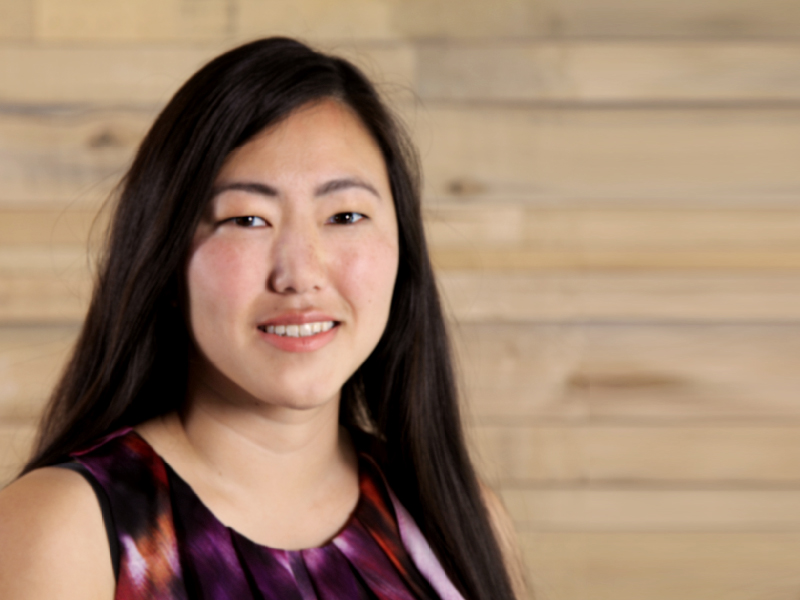
ID alum Jenna Petersen (MDM 2018) talks about her work for the federal government, her graduate experience at IIT Institute of Design (ID), and what sets ID apart.
What’s your background and how did you decide to come to ID?
My undergrad degree is in advertising from University of Illinois. I did that for 11 years with a specialty in consumer insights. We did things like journey maps and personas, but not from a human-centered perspective.
I wanted to find more substantial and meaningful purpose in my work. I wanted to influence decisions made around products, and not just messages about those products.
I had friends and family members that knew about ID; I’m from the Chicago area. I was at a natural break in my career and decided to apply. I was really interested in the MDM program because I did have a lot of experience. It was a nice way to do a shorter, 9-month program, to help me make that pivot into the design world.
My past work had relevance and value, but I needed to learn to reframe that and talk about it in a new way. My big aim was to gain some of the vocabulary to translate past work to make sure it stayed relevant. I didn’t want to start from zero and didn’t think I needed to.
What do you most value about your ID experience?
What I definitely liked were the human centered design basics: do the user research, learn to prototype, strategy, methods. That was solid and what I came here for, as well as a lot of the theory and some of the things that I think are more cutting edge and newer to the design world: integrated systems thinking and some of the futures work. I hadn’t had a lot of exposure to that, but being able to think about that in terms of design basics as well as my past experience I found was really powerful and different than other design exposure I’d had.
My cohort was 17–25 people, both full-time and part-time. A lot of full-time students like myself had decided to take a little break and pivot in their careers. It made me feel better that I wasn’t the only one. We all had similar levels of work history and I really liked the diversity of backgrounds that everybody brings. This was comforting, too, since I don’t have a traditional design background and lack some of those fundamental visual skills, for instance.
On the flipside, a lot of skills I had from my background were things that others didn’t have. So I saw that those types of collaborations, with people from very different backgrounds, were really powerful.
What would you tell someone considering the MDM program?
One thing is to know why you’re coming and what you hope to get out of it at least in a broad sense. Also, be open to that desired outcome to change a little bit as you move through the program and learn new things and get excited by new things.
I think what ID is really great at is building strategic capability. That’s where it really shines and is differentiated from other design programs.
Describe your current work.
My team is embedded in the Veterans Experience Office at the VA, dedicated to improving customer experience for veterans. Our work there is to build tools to capture veterans’ feedback about VA services to make improvements to those programs. We also do end-to-end human-centered design creating products, services, and tools to improve customer experience at the VA.
Design is becoming a more and more accepted and sought-after approach for government products and services. And customer experience is becoming a more important priority in government in general.
Why civic design?
Learning about futures, sustainability, or systems was newer to me. These were things that I really gravitated toward. It made me want to pursue opportunities that would allow me to practice those skills. I found I really enjoyed complex problems and large scale problems—that leads you toward some areas and away from others.
Government is a prime example of complex and large scale issues.
What difference did the MDM make? What do you think you’d be doing today if you hadn’t pursued it?
I’d be doing what I did before. I actually liked that work, I didn’t hate it, I wasn’t burned out. I just felt that there was more meaning to be had, that I could turn my skills toward more meaningful topics. So the degree did what I set out for it to do.
Where do you see design increasingly providing value or taking a larger role?
Design partnering with other disciplines to create new knowledge and understand the world is something that is already happening and can and should happen more. One example is in the Veterans Experience Office: we’re building a function for human-centered design and data science to collaborate as two different ways of knowing more about people. It’s an interesting model of bringing qualitative and quantitative data together. That and other hybrid approaches are going to become more common and necessary. There are so many different types of knowledge out there, and we want to make full use of everything we can.
I also think the field of design is going beyond the human-centered approach. That can mean designing for relationships or designing for ecosystems or more complex networks. I think that’s an evolution of design and presents more ways to approach our really complex problems.